Half Man, Half Robot
We can rebuild him

These days, it's easy to pretend that instead of going out for a run, you're getting ready to go to a fancy dress party as Robocop. Enormously complicated watches on wrists, heart rate straps, phones (smart and stupid), music players, headphones, cadence sensors, sunglasses that tell you when you need an ice cream... if we weren't all at least 50% horsemeat by now, we'd be almost entirely batteries.
There comes a point after every run when your focus turns to the little bleeping devices attached to your body. Once you've called your parole officer, and convinced him or her that it went off by mistake, you can concentrate on those all-important running statistics.
In order to stave off the rise of the machines for a few more decades, or at least to give you something to think about in your lunch hour, let's look at GPS devices, and why they'll only ever give you an approximation of what you're actually doing, but how in reality, they're still pretty awesome. *adjusts glasses*
How Does GPS Work?
Twenty thousand kilometres above your feet, there are a bunch of about 30 GPS satellites in the sky. They are spread out so that wherever you are on Earth, the sky above you contains at least four of them - and they pump out regular messages saying exactly where they are.
Your watch picks up these messages, and by looking at the time they were sent, can work out how far the messages have travelled. If there was a satellite over Manchester, and it sends a message which my watch receives 0.001 seconds later (light travels at 186,000 miles per second - take that Usain!) my watch can work out that I must be somewhere within a 186 mile radius of Manchester.
That's not much use by itself, and I knew that anyway. But at the same time, my clever watch is getting messages confirming that it's 53 miles from London, and 175 miles from Bristol. Draw those three circles on a map, and they'll intersect, leaving only a very small chunk of planet that I can be occupying.
Amazingly, this system all fits in something you can fit on your wrist, and it can pinpoint you to within ten metres. It can go a bit wrong if the messages bump into buildings or if the atmosphere is particularly soupy - but generally speaking, it works very well.
So Why Should We Be Cautious?
Forget about the idiots who drive their cars into rivers or along train tracks because their Sat Nav told them to. That's not something that science can solve, short of exploring new forms of heavy medication.
No, I'm talking about the important stuff. Like how far you ran, and what your average speed was, and how much of your run was faster than eight-minute miling, and whether the race you just did was long or short.
When I'm in my happy place, bumbling along at about nine minutes a mile, I cover about 15 metres every five seconds. That's how often my watch speaks to the satellites to find out where I am. There I am in the diagram, running from point A to point B, along the red line.
And there's the first problem. Even if my watch is deadly accurate, and can pinpoint me exactly at A and B, it won't have a clue what I did as I travelled between them. It calculates the direct distance between the two, and therefore will tend to underestimate how far I've run.
But surely, unless I took a real sharp bend, it's not going to be far off, right? Well yes, but if it misses out 50cm every five seconds, and I run for 45 minutes, that adds up to a third of a mile that I'm being deprived of. And if I ran 5.3 miles instead of 5, that also means I ran thirty seconds per mile faster than I thought.
And...
You might also have noticed that even if you're running at what feels like a consistent pace, the results from your watch show quite a variation. My wife and I ran 14 miles on Saturday, at an average of 9:28/mile. The analysis shows that our run included a whole mile worth of running that was faster than 8:20/mile. I think we'd have remembered.
Look at the diagram again and remember that our watches aren't deadly accurate. The big circles around A and B represent the 10 metre error margin around each point. The watch could record me at points C and D - adding another 20 metres to the distance I covered in one five second burst, turning nine-minute-miling into Roger Bannister.
Fortunately, not only is that the worst case, it's also a problem that evens up, rather than adds up. The points recorded are just as likely to be too close together, and the longer you run, the more likely it is that they'll even out to give you a nice 'middle' to look at.
So...
The next time you're beating yourself up because the race you've just done is short or long, or if you're not doing as much training as you hoped, or not running as fast as you like, just remember just how much is going on inside that little bleeping box on your wrist. And don't forget to call your parole officer.
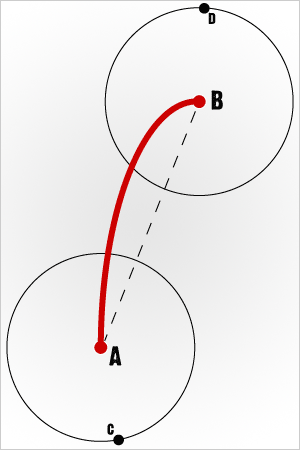
Cut along the dotted line, and fold points A to B, and C to D, to make your very own noseclip. May not be suitable in water.
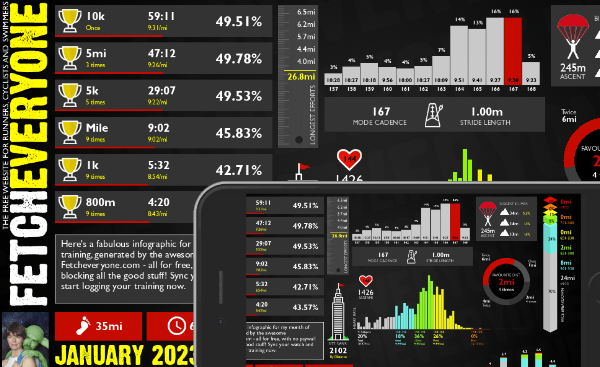
Monthly Summary
A brand new shareable infographic showing a colourful breakdown of your training month.
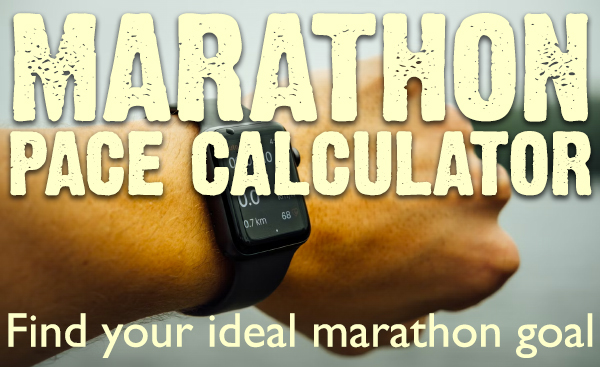
Marathon Prediction
We delve deeper to give you greater insights when working out your goal marathon time.
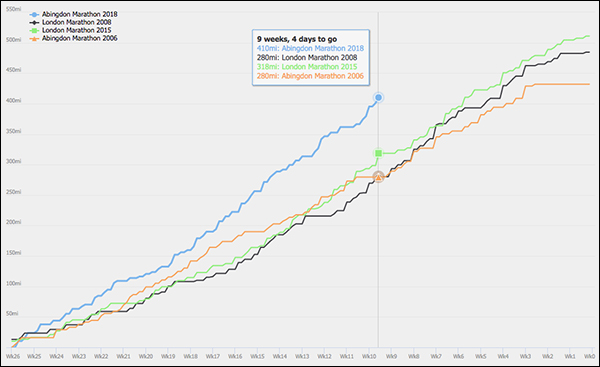
Pre-race Training Analysis
See your accumulated mileage in the weeks leading up to any event in your portfolio, and compare it to your other performances

Your 365 Day Totals
Peaks and troughs in training aren't easy to find. Unless you use this graph. Find out what your peak training volume really is
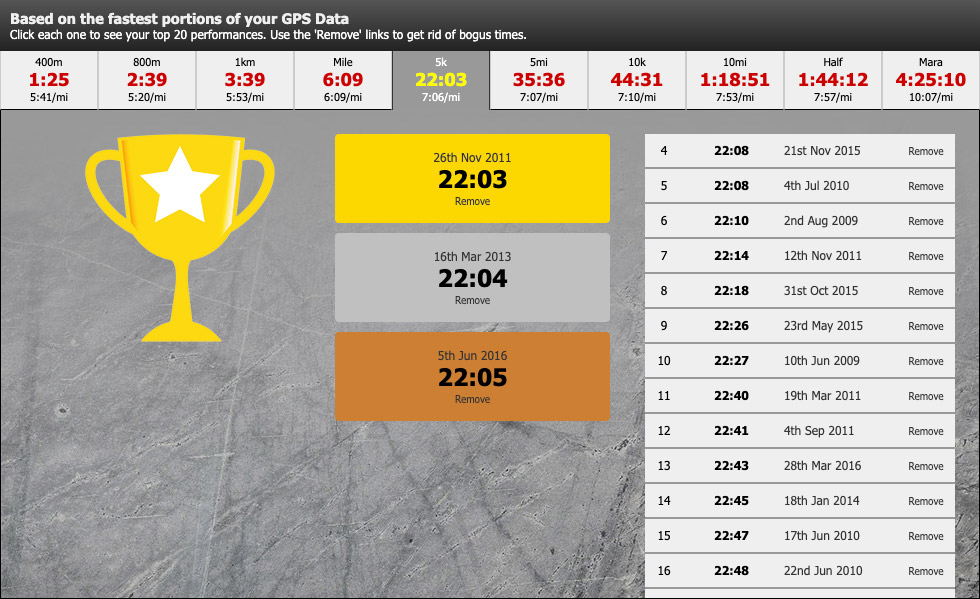
Benchmarks
See the fastest portions from all your training runs. Filter by time to give you recent bests to aim at. Every distance from 400m to marathon.
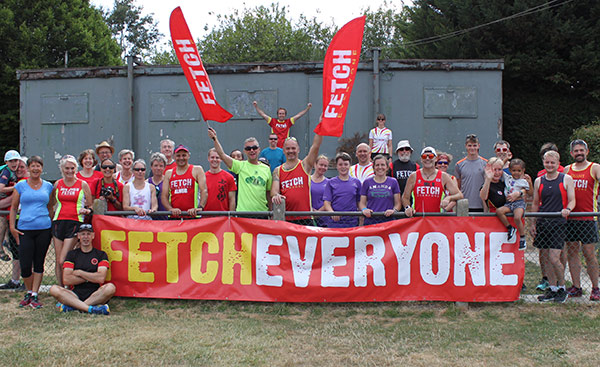
Fetch Everyone Running Club
Join our UKA-affiliated club for event discounts, London Marathon ballot places, the chance to get funded for coaching qualifications, and a warm feeling inside.





Leave a comment...
-
Is there any homework to do now
BigChiefRunningBore
-
I am enthused.
Argie
-
nose clip won't stay on
mikep
-
Beam me up Scotty!
John In Pink
-
Isn't it 1 second between points I do love your writing! :-)G
HappyG(rrr)
-
twenty thousand metres above - do we need to duck if we see one coming
oi you
-
I'm too sexy for my watch.
RichHL
-
Love the article Fetch!:):)
Garfield
-
Lovely stuff.
paul the builder
-
Great article. This should come with every GPS watch bought marked 'READ THIS FIRST'
Jigs
-
Write that down in your copybooks now.
Grid
-
Great article. So in theory running slower is better as your are likely to have covered less ground in between your GPS points so in fact would be more accurate if you mimble

*Anj*
-
My postman was even more impressed with this than my Gran was.
_andy
-
Cracking article as ever.
Fat Dave
-
Hello
emdee
-
Brilliant article. I wondered how many satellites there were. Now I know.
Columba
-
Great article thanks!
fleecy
-
Loved the article you should write a book! I'd buy it. Oh my parole officer said I'm not allowed out on my own any more......
Wendolene Wobbler
-
Interesting read. Of course it helps your 'accuracy' if you stop the fancy GPS watch when you finish too which seems to be my downfall whenever I borrow the hubbies all-singing-and-dancing Garmin...
Tazsedai
-
The trick is to run in straight lines and only change direction at the exact moment your GPS updates. Problem solved.
The Teaboy
-
Great article in easy to understand terms. If you wish to find further detail on GPS use then visit the Road Runners course measurement site
Psimon
-
Armani: just think about the geometry and how far above you the satellites are and what a tiny proportion of that 500 metres is. It's amazing they can even TRY to calculate ascents.
Fat Dave
-
My example using the circle around Manchester is a simplification in 2D of what is actually a 3D system. The time taken for the message to travel from satellite to watch actually describes the radius of a sphere. And then the location and altitude are calculated by looking at where the spheres intersect. Imagine a 3D Venn diagram with a weird upright sausage shape of intersection in the middle. The top and bottom ends of that sausage represent the max and minimum altitude - and the watch chooses the most likely value. There are so many small variations in the earths surface it certainly is a miracle that it does as well as it does - but that's why when you import your routes to FE we use a lookup service to grab some more accurate data.
fetcheveryone
-
Mmmm sausage.
paul the builder
-
really easy to understand
 have passed it on to new runner with a new garmin toy
have passed it on to new runner with a new garmin toy 
colettedeann
To comment, you need to sign in or sign up!I note you're too nice to say 'next time you're giving the race organiser a hard time...' but that's really what people need to hear.
The really fun part is the satellite technology keeps improving. GPS is one constellation of satellites (the American one); Russia has GLONASS operational worldwide now China has Beidou2 (though only in that region currently) and Europe has Galileo under development.
Which all means soon enough your funky watch will have over a HUNDRED satellites to choose from not just thirty. (Which probably won't make it more accurate - it'll still be 10m per satellite - but you won't have to wait so long for a signal and you won't lose it so often).
What's more there are REALLY funky chipsets that measure multiple frequencies from each satellite and can pinpoint you to within 10cm. Those are available now but they're so expensive we couldn't afford one if we all clubbed together and shared it. But they'll get cheaper eventually.
In the meantime the other thing your watch will be able to do soon is to cross-reference your satellite signals with a compass gyroscope and various accelerometers - all built into its microchips. They're just starting to do that in cars now and can get accuracy to about 6ft. It'll be on your wrist soon enough.
coursemeasurement.org.uk
And of course they do not use GPS for accurate measurement but rather the Jones-Reigel counter